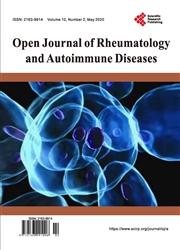Morphology of Salivary and Lacrimal Glands
引用次数: 1
Abstract
Generally, the tissues consist of stroma and parenchyma. The epithelial tissue, which forms the basis of exocrine glands, is rich in parenchyma. The secretions of salivary glands are functionally related to the digestion, and the secretions of the lacrimal glands protect the eye surface and allow to maintain a proper vision. The parotid is a pure serous gland and consists of serous acinus. The submandibular gland is a mixed gland consisting of serous acini and mucous tubules, and the acinus is predominant. The sublingual gland is a mixed gland composed of serous acini and mucous tubules, such as the submandibular gland, but the mucous tubules are predominant. The secretions of salivary glands reach the oral cavity with the intercalated canal, the intralobular canal, the interlobular canal, and the main duct channel. “Stenon duct” in the parotid gland, “Wharton duct” in the submandibular gland, and “major sublingual” duct in the sublingual gland open into the oral cavity. The lacrimal gland is structur-ally similar to salivary glands. This gland was divided into lobules by irregular tight connective tissue. In the lobules, acinar cells and mucus tubules are located together.唾液腺和泪腺的形态学
一般来说,组织由间质和薄壁组织组成。上皮组织是构成外分泌腺的基础,富含薄壁组织。唾液腺的分泌物在功能上与消化有关,泪腺的分泌物保护眼表并使视力保持正常。腮腺是一种纯浆液腺,由浆液腺泡组成。颌下腺是由浆液腺泡和粘液小管组成的混合性腺,以腺泡为主。舌下腺是浆液腺和粘液小管的混合型腺体,如颌下腺,但以粘液小管为主。唾液腺的分泌物经插间管、小叶内管、小叶间管和主管通道到达口腔。腮腺的“Stenon导管”、下颌骨的“Wharton导管”和舌下腺的“主要舌下导管”都通向口腔。泪腺在结构上与唾液腺相似。腺体被不规则的紧密结缔组织分成小叶。在小叶中,腺泡细胞和粘液小管位于一起。
本文章由计算机程序翻译,如有差异,请以英文原文为准。
求助全文
约1分钟内获得全文
求助全文

 求助内容:
求助内容: 应助结果提醒方式:
应助结果提醒方式:


